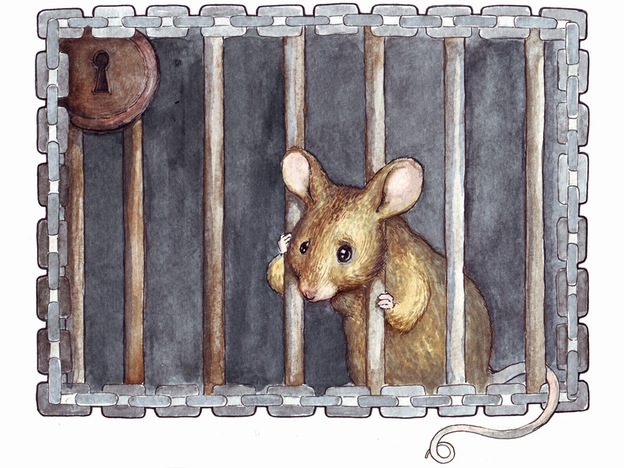
He was just an ordinary mouse, nothing special. He lived, very briefly, 237 years ago, in the laboratory of a great chemist, Joseph Priestley. Here he sits, in his cage.
A painting of a forlorn mouse in jail
Benjamin Arthur
There were lots of mice in Priestley's lab. He had made his reputation as one of the first scientists to identify oxygen. He studied mice to figure out what happens inside animals as they breathe. This meant he regularly opened them to examine lungs, veins, arteries, to see that blood changed color when it moved through lungs. And since tuberculosis -- or "consumption" -- was the scourge of that era, lung research seemed like a valuable thing to do.
But animals didn't last long in Priestley's lab, especially mice. So many died that his lab assistant, a young woman named Anna Barbauld, decided that Priestley should give his lab animals a little more respect. It was, after all, 1773, just a few years before Lexington, Concord and the Declaration of Independence. On both sides of the Atlantic, "inalienable rights" were a rallying cry, and Anna, a young wife and poet, decided to write a protest poem. She called it "The Mouse's Petition to Dr. Priestley, Found in the Trap where he had been Confined all Night."
Early Animal Rights Poem Discovered: A Mouse's Plea : NPR
No comments:
Post a Comment